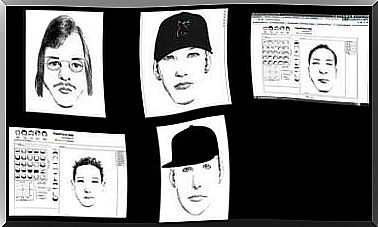Overdiagnosis In Mental Health: How And Why?

The phenomenon of overdiagnosis in mental health is related to the tendency to make pathological behaviors that are normal and involve only a malaise that cannot be classified as a disorder. This happens within psychiatry and not only generates wrong diagnoses, but also the use of medications when these, in fact, are not necessary.
Diagnosis has long been one of the most problematic aspects of psychiatry. This is due to several factors. One of them is that the diagnosis is often very subjective, since it is the psychiatrist, based on his observation and with inaccurate instruments, who determines whether or not a person has a disorder. Under these conditions, errors are very common, which in turn leads to overdiagnosis.
The most accepted instrument as a reference is the Diagnostic and Statistical Manual of Mental Disorders (DSM). This, in turn, is done by a group of psychiatrists, almost all Americans. The definition of disorders and their inclusion or not in the manual is done by vote. Its first version included only 60 disorders. The last one has more than 500.

Is there an overdiagnosis in the field of mental health?
Everything indicates that yes, there is an overdiagnosis in the field of mental health. If we look at the latest version of the DSM, experts say that we could classify 70% of the population with some mental disorder and that, therefore, those 70% would have to receive some kind of medication.
DSM-V includes some alleged disorders that have been severely questioned, including by professionals. For example, there is a disorder called “Attenuated Psychotic Syndrome”. The DSM specifically says that “This syndrome is characterized by psychotic-like symptoms that are below a threshold for full psychosis.”
This would be like saying that someone has characteristics that make him or her more likely to develop psychosis in the future. There is no psychosis at the moment, but the person would still take antipsychotics.
In fact, we could all have this disease. Most of us have gone through a situation in our lives where we were “on the point of going crazy” but nothing happened. Treating a disorder that could arise in the future – or not – is absurd. It’s like giving hypertension medication to the child of a hypertensive person, because that person has a risk of developing the same disease.
Another example, of the many that we can give, is that, by DSM-V, if a person feels extremely sad for more than a week, after the death of a loved one, that person can be diagnosed with depression.
a malaise or an inconvenience
The boundaries between health and illness on the plane of mind cannot be defined very precisely. We have to understand that “normal” is a very subjective concept and usually associated with a specific context. It is also necessary to remember that it is characteristic of human beings to have some degree of malaise, because living is going through uncertainty.
We will never get everything we want, nor will we ever achieve a perfect balance. There is also a degree of unease that exists within each of us because of the existence of death, and this is a brutal imposition. No one escapes even a dose of frustration in the face of circumstances that cannot be changed, and everyone has some degree of selfishness or evil within them.
It is reasonable that we live some phases in which we feel sad, or other moments marked by anxiety. For some psychoanalysts it is perfectly normal for us to have up to three episodes of psychosis in a lifetime if we are faced with a specific trigger. Therefore, perhaps the manual is addressing different feelings as disorders that are perfectly normal and, therefore, it is generating an overdiagnosis in the field of mental health.

How to address discomfort and disorder
Until recently, situations such as mourning the loss of a loved one were overcome with the support and acceptance of the immediate environment of the person who suffered the loss. The family and friends helped the person to deal with this discomfort, they understood as normal that there was a time of suffering and this was accepted and tolerated. These days, these support mechanisms are getting weaker.
It is much more difficult these days to express emotional pain, and often those who feel it find themselves alone to deal with the situation. Furthermore, under the premise of an ideal of being well at all times, many people do not even allow themselves to suffer. The solution, then, is to resort to medicines that the psychiatrist can prescribe in the snap of a finger.
The medicine fulfills the function of, for better or worse, helping to manage individual and collective malaise. Overdiagnosis is a reality produced by the two poles of the relationship. On the one hand, there are the orthodox psychiatrists, who only know how to deal with patients by offering quick diagnoses and interventions through medication. On the other, there is the one who suffers and refuses to understand his pain. Thus, the person asks for a substance that helps to take the pain away.









